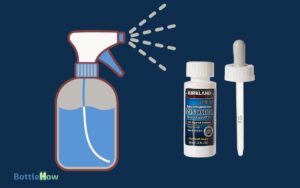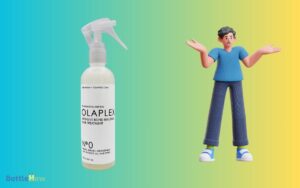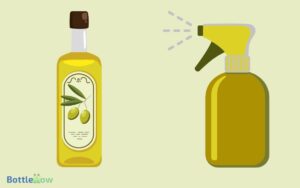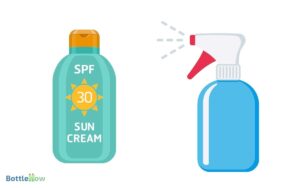Can You Use Rit Dye in a Spray Bottle? Yes!
Yes, you can use Rit Dye in a spray bottle. First, dissolve the dye thoroughly in hot water, maintained at 140°F, and make sure the solution has a slightly alkaline pH of 7-8.
For effective coverage, use one package of dye per 2 pounds of fabric. This guarantees uniform coloration. Dilute the solved dye based on your desired color intensity and transfer it into a spray bottle with an adjustable nozzle for precision.
The spray application allows for targeted and gradual layering, giving you control over the dye’s intensity and distribution, which is essential for achieving specific effects or gradients on your projects. Exploring different dye concentrations and applications will open up further possibilities.
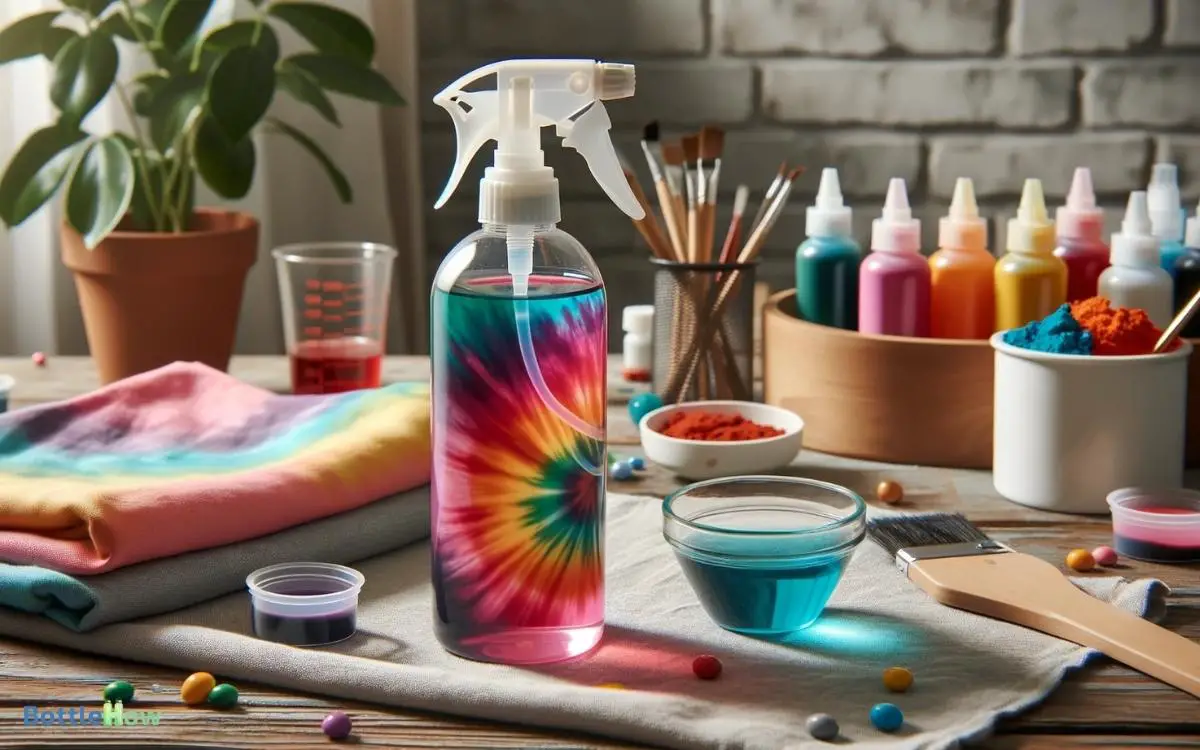
Key Takeaways
Understanding Rit Dye Composition
Rit Dye primarily consists of direct dyes, which bond chemically to cellulose fibers when correctly dissolved and maintained at an appropriate temperature.
When you’re preparing the dye for use, it’s essential to dissolve it thoroughly in hot water, typically around 140°F (60°C). This guarantees the dye molecules are fully activated and ready to bond.
The pH of the solution should ideally be slightly alkaline, around pH 7 to 8, to enhance the dye uptake. This can be adjusted by adding a small amount of washing soda if necessary.
Accurate measurement is key typically, one package of Rit Dye is sufficient for approximately two pounds of dry fabric, ensuring uniform coloration and optimum results for those you serve.
Benefits of Spray Bottle Dyeing
When you use a spray bottle for applying Rit Dye, you gain superior control over color intensity by adjusting the dye-to-water ratio to specific needs, typically ranging from a 1:3 to a 1:10 ratio depending on desired saturation.
This method facilitates a uniform application, ensuring that dye molecules are evenly distributed across the fabric surface, essential for achieving consistent coloration.
Additionally, the spray application reduces dye wastage and limits exposure to airborne particles, improving both environmental and personal safety.
Enhanced Color Control
Applying dye with a spray bottle allows you to precisely control the saturation and distribution of color across your fabric. This method is particularly effective when aiming for specific effects or gradients in your textile projects.
Here’s how you can benefit:
- Targeted Application: You can apply a concentrated solution directly where needed, avoiding over-saturation and wasteful dispersal that often occurs with dip-dyeing.
- Gradual Layering: By adjusting the dye concentration (e.g., 5% dye to 95% water for lighter shades) and the spraying distance, you can build color intensity gradually, achieving more intricate patterns and shades.
- Uniform Coverage: Even spraying ensures consistent color coverage, essential for large or complex pieces, reducing the risk of blotchy or uneven spots.
Easy Application Process
You’ll find the spray bottle method remarkably straightforward, as it requires only precise mixing of the dye solution and a consistent hand for spraying.
Begin by dissolving the Rit dye powder into hot water, adhering to a ratio of one teaspoon of dye to one cup of water for standard shades. For deeper hues, adjust the concentration accordingly, perhaps doubling the dye quantity.
After mixing, funnel the solution into your spray bottle, ensuring it’s equipped with a fine mist setting for even application. When spraying, maintain a distance of about six to eight inches from the fabric to promote uniform color deposition.
This technique allows you to meticulously apply dye in controlled sections, enhancing the precision of your work and serving your creative vision effectively.
Reduced Mess and Waste
Beyond enhancing control and precision, using a spray bottle for dyeing greatly reduces the mess and waste typically associated with traditional dyeing methods. This method allows for more even coverage and enables creative techniques like layering and blending colors with ease. Additionally, it minimizes excess dye usage, making it a more cost-effective and environmentally friendly option. If you’re wondering, can you put toner in a spray bottle, the answer is yes—many people use spray bottles to apply toner for a more controlled and efficient application.
You’ll find that this method not only conserves your dye solution but also minimizes the need for extensive cleanup afterwards.
Here’s how you benefit from this approach:
- Targeted Application: You can apply the dye precisely where needed, reducing dye runoff and unnecessary saturation of the fabric.
- Conservation of Dye: By adjusting the spray nozzle, you control the amount of dye released, effectively using less dye and reducing spillage.
- Simplified Cleanup: Since the dye is contained within the bottle and directed via the nozzle, you’ll encounter fewer spills, meaning less time spent on post-dyeing cleanup.
This targeted, conservative approach ensures you serve your resources and time effectively.
Necessary Supplies for Spray Dyeing
To start spray dyeing with Rit Dye, make sure you have a spray bottle with an adjustable nozzle, protective gloves, and a well-ventilated workspace.
Additionally, consider the chemical composition of the dye and the impact of environmental conditions like humidity and temperature, which could affect the dye’s behavior.
| Supply Item | Purpose |
|---|---|
| Spray Bottle | Application of dye in a controlled manner |
| Protective Gloves | Safety from chemical exposure |
| Well-Ventilated Area | Prevention of inhalation of dye particles |
| Fabric Preparer | Enhances dye uptake and color vibrancy |
Preparing Rit Dye for Spraying
Before you start spraying, make sure you select the appropriate Rit Dye formulation for your fabric type. Options include dyes specifically formulated for synthetic fibers like polyester or versatile dyes suitable for cotton and silk.
For effective spraying, dissolve 1 teaspoon of dye in 2 cups of hot water (at least 140°F) to guarantee complete dissolution and uniform color application.
Lastly, prepare your spray bottle by making sure it’s clean and the nozzle is set to a fine mist to facilitate even distribution of the dye.
Selecting the Right Dye
Selecting the suitable Rit Dye formula is essential, as you’ll need a dye that’s compatible with the fabric type and capable of being diluted effectively for spray application.
Here’s a breakdown:
- Fabric Compatibility: Make sure the dye type aligns with your fabric’s material. For example, Rit’s All-Purpose Dye works well with cotton, linen, silk, wool, and nylon, while their DyeMore series is formulated for synthetics like polyester and acrylic.
- Concentration Levels: Check the concentration requirements. Dyes formulated for high dilution maintain vibrancy even when heavily diluted, a critical factor for uniform spray distribution.
- Chemical Properties: Consider the dye’s pH and solubility. Dyes with higher solubility in water are preferable for spray applications to prevent nozzle clogging and ensure smooth application.
Mixing Dye for Spraying
Begin by dissolving the appropriate amount of Rit Dye in warm water, making sure a ratio that maintains color intensity while being fluid enough for spray application.
Typically, you’ll need about one teaspoon of dye for every cup of water, but you might adjust this concentration based on the depth of color desired and the fabric type. Stir the solution until the dye is completely dissolved, creating a homogeneous mixture.
To guarantee even application and prevent clogging, strain the dye solution through a fine mesh sieve or cheesecloth to remove any undissolved particles.
This step is vital, as even small granules can obstruct the spray nozzle, affecting the spray pattern and ultimately the quality of your dyeing project.
Spray Bottle Preparation
After confirming your dye is fully dissolved and filtered, carefully pour the solution into a clean spray bottle, ready for application.
Here’s how to prepare your spray bottle for best dye application:
- Select a Spray Bottle: Choose a bottle with an adjustable nozzle to control the spray pattern. A capacity of at least 500 mL is recommended to avoid frequent refills.
- Clean Before Use: Thoroughly rinse the bottle with distilled water to eliminate any contaminants that might react with the dye components.
- Test Spray Mechanism: Before filling, test the spray bottle with plain water to ensure the nozzle delivers a uniform mist and not uneven droplets, which could affect the dyeing outcome.
Step-by-Step Spray Dyeing Guide
Prepare your workspace by covering surfaces with plastic sheeting and wearing protective gloves to ensure safety and ease of cleanup.
Fill your spray bottle with a mixture of one part Rit Dye and three parts hot water, making sure the solution reaches 140°F for best dye activation. Stir the dye and water using a stainless steel spoon to prevent any chemical reaction that might alter the dye’s color.
Next, test the spray on a scrap piece of fabric to confirm the color intensity and spray pattern. Adjust the nozzle for a finer or coarser mist depending on your project’s needs.
Hold the bottle 6 to 8 inches away from the fabric and spray evenly in a sweeping motion, ensuring thorough coverage without oversaturation.
Tips for Even Dye Application
To guarantee even dye application, you must first prepare the surface by making sure it’s clean and smooth.
When applying Rit Dye with a spray bottle, maintain a continuous motion and keep the nozzle approximately 20 cm from the fabric to avoid splotches.
Always test the spray consistency on a scrap piece of fabric to assess the color saturation and distribution before proceeding with your main project.
Prepare Surface Properly
Make sure the surface is evenly leveled and free of debris to promote uniform dye absorption and minimize splotchiness. Preparing the surface properly is essential for achieving best results with Rit Dye in a spray bottle.
Here are three key steps:
- Clean the Surface: Thoroughly clean the surface with a solution of isopropyl alcohol and water (70:30 ratio) to remove oils, dust, and other contaminants that could interfere with dye binding.
- Dry Completely: Allow the surface to air dry or use a clean, lint-free cloth to pat it dry. Make sure no moisture remains as this could cause uneven dye application.
- Smooth Out: If working with fabric, iron it on a low heat setting to remove wrinkles and ensure a flat dyeing surface.
Continuous Motion Technique
For even dye distribution, continuously move the spray bottle in a smooth, overlapping pattern across the surface while maintaining a consistent distance of about six to eight inches.
This method guarantees thorough coverage without oversaturation, which is vital for achieving uniform color intensity. The motion should mimic a gentle waving action, methodically covering every inch of the fabric.
It’s important to maintain this rhythm to prevent the accumulation of dye in any one area, which can lead to splotching. Diligently monitor the spray pattern to make sure that the dye mist is fine and uniform, adjusting the nozzle as necessary to maintain excellent dispersion.
This technique, when performed correctly, caters exceptionally well to your desire to achieve professional-grade results for those you serve.
Testing Spray Consistency
Why not start by testing the consistency of your dye spray to guarantee even application across all your projects? Achieving the right viscosity and spray pattern is essential for uniform coloration and can greatly enhance your project’s aesthetic quality.
Here are some steps to ensure top performance:
- Dilution Ratio: Begin by mixing Rit Dye with distilled water at a precise 1:3 ratio. This balance ensures the dye’s molecular integrity isn’t compromised, enhancing sprayability.
- Nozzle Check: Use a nozzle with an aperture of at least 0.3 mm to prevent clogging and promote a consistent mist.
- Test Swatch: Always spray on a white test fabric to visually assess the spray pattern and adjust if necessary. This step identifies any uneven distribution or droplet size issues.
Customizing Colors and Effects
You can create vibrant and unique effects by adjusting the concentration of Rit Dye in your spray bottle solution. By varying the ratio of dye to solvent, you control the saturation and hue of your color application.
Here’s a guide to help you start:
| Dye Concentration | Expected Color Intensity |
|---|---|
| 1 tsp per cup | Light shade |
| 2 tsp per cup | Medium shade |
| 3 tsp per cup | Dark shade |
| 4 tsp per cup | Very dark shade |
For precise applications, use distilled water as your solvent to guarantee chemical stability and consistency in results.
Always mix thoroughly to achieve an even color distribution in your solution. This technique allows you to serve others with custom-designed fabrics, tailored to their preferences and needs.
Safety Precautions and Tips
When using Rit Dye in a spray bottle, it’s crucial to wear protective gloves and eyewear to prevent any skin or eye irritation from chemical exposure.
Here are further detailed safety measures:
- Ensure Adequate Ventilation: Work in a well-ventilated area to avoid inhaling fumes. The ideal setting would have cross-ventilation, approximately 7-10 air changes per hour.
- Use a Respirator Mask: If you’re sensitive to chemical smells or working in a less ventilated space, a respirator mask capable of filtering out particulate matter is recommended.
- Skin Protection: Apart from gloves, wear long sleeves and pants to minimize any direct contact with the dye, which contains varying chemical components like sodium chloride and acetic acid, potentially irritating to the skin.
Cleaning and Maintenance Post-Dyeing
After completing your dyeing project, promptly clean all used equipment with a mixture of hot water and mild detergent to prevent staining and remove any residual dye.
Guarantee the water is approximately 60°C to effectively dissolve the dye molecules. Use a pH-neutral detergent at a concentration of 5 mL per liter of water.
Thoroughly rinse all items under running water for at least 5 minutes to make sure no detergent or dye remains. For persistent dye residues, you might need a solution of 10% distilled white vinegar and 90% water. Soak the tools for 30 minutes, then rinse again.
This acidic solution helps break down dye particles, making them easier to wash away, ensuring your equipment remains pristine and ready for future use.
Examples of Spray Dye Projects
Having cleaned your equipment, let’s explore some creative projects where spray dye techniques can be effectively applied.
- Ombre T-Shirts: Dilute Rit Dye to a 1:3 ratio with warm water in your spray bottle. Begin spraying from the bottom, gradually decreasing saturation as you move upward to achieve a seamless gradient. Allow the dye to set for 30 minutes before rinsing.
- Patterned Table Linens: Use stencils to create precise designs. Mix dye at a concentrated 1:1 ratio for bold colors. Spray through the stencil onto pre-washed linen, allowing each layer to dry slightly before adding the next color. Fix the dye by ironing on a high setting.
- Customized Sneakers: For synthetic materials, adjust the dye mix to include a 20% vinegar solution to enhance color adherence. Spray evenly and let sit for an hour before washing off excess dye.
Conclusion
So, you’ve ventured through the vibrant world of spray dyeing with Rit Dye. Remember, precision is crucial: a 1:1 dye-to-water ratio guarantees vivid hues, while a finer spray setting offers uniform color.
Always wear gloves and work in a ventilated area to handle the dye safely. Now, as you clean your bottles and workspace, consider the serendipity of colors blending on fabric—each project unpredictably unique, just like a chemical reaction.
Ready for your next creative experiment?

